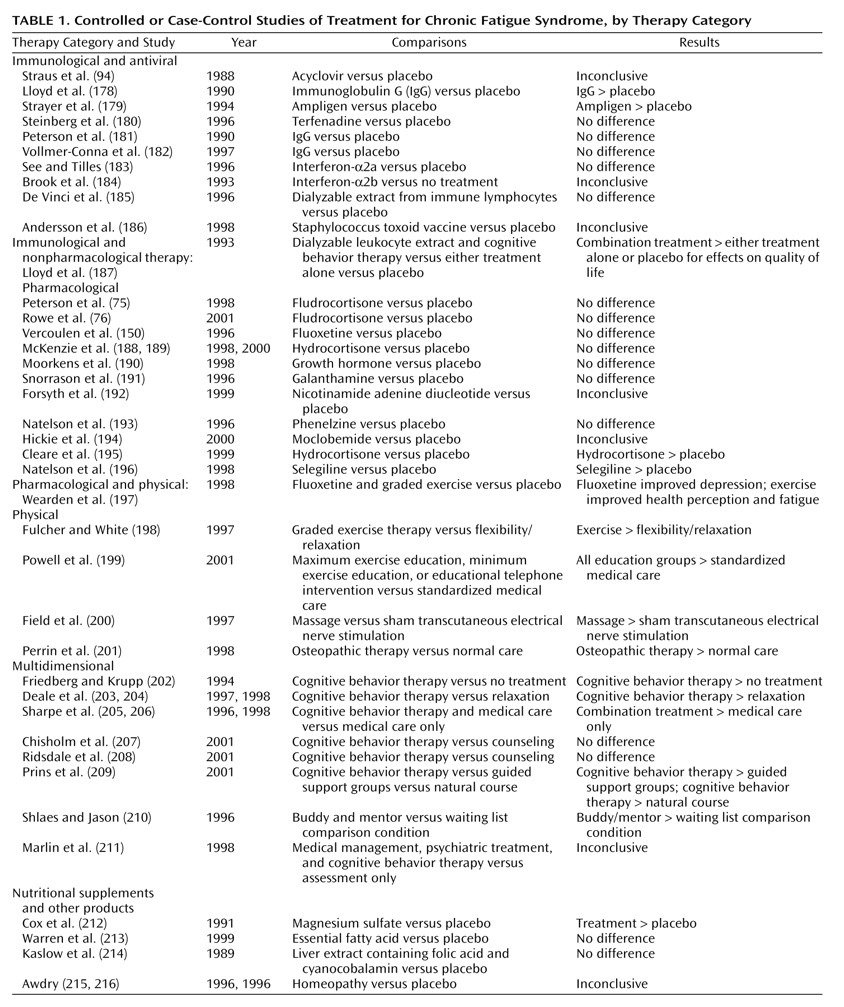Chronic Fatigue Syndrome: A Review
Abstract
Case Definition
Epidemiology
Clinical Presentation
Overlapping Conditions
Pathophysiology
Genetic Studies
Central Nervous System Abnormalities
Neuroimaging studies
Neuropsychological studies
Neuroendocrine studies
Autonomic activity studies
Immune System Abnormalities
Infectious Agents
Sleep Disruption
Exercise Studies
Psychiatric Disorders
Somatization disorder
Anxiety disorders
Major depression
Attribution, Perception, and Coping
Clinical Evaluation
Treatment
Pharmacological Treatments
Nonpharmacological and Behavioral Interventions
Alternative and Complementary Approaches
Patient Advocacy and Self-Help
Prognosis
Conclusions

Footnote
References
Information & Authors
Information
Published In
History
Authors
Metrics & Citations
Metrics
Citations
Export Citations
If you have the appropriate software installed, you can download article citation data to the citation manager of your choice. Simply select your manager software from the list below and click Download.
For more information or tips please see 'Downloading to a citation manager' in the Help menu.
View Options
View options
PDF/EPUB
View PDF/EPUBLogin options
Already a subscriber? Access your subscription through your login credentials or your institution for full access to this article.
Personal login Institutional Login Open Athens loginNot a subscriber?
PsychiatryOnline subscription options offer access to the DSM-5-TR® library, books, journals, CME, and patient resources. This all-in-one virtual library provides psychiatrists and mental health professionals with key resources for diagnosis, treatment, research, and professional development.
Need more help? PsychiatryOnline Customer Service may be reached by emailing [email protected] or by calling 800-368-5777 (in the U.S.) or 703-907-7322 (outside the U.S.).

